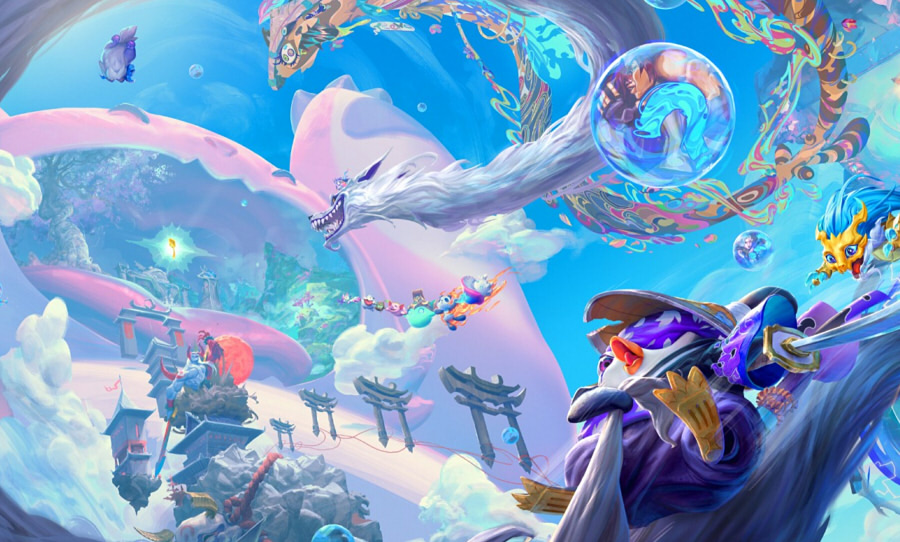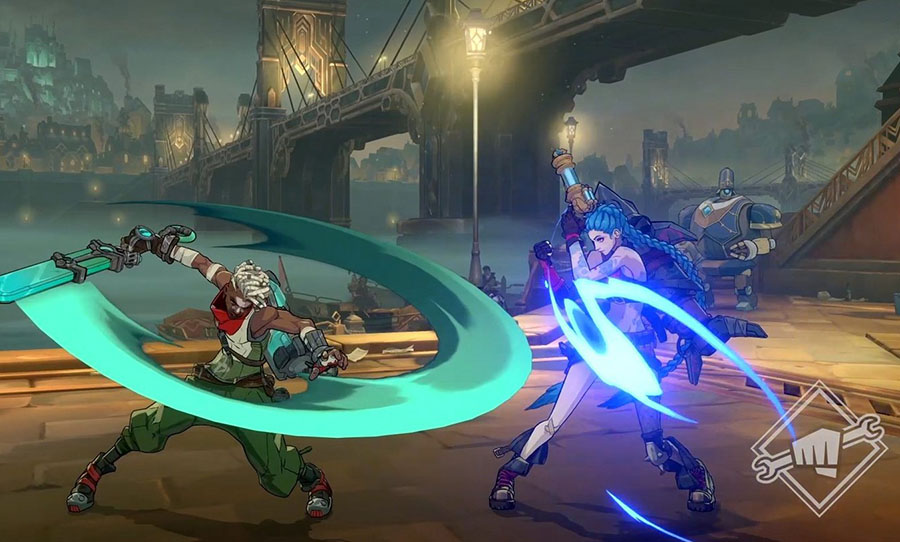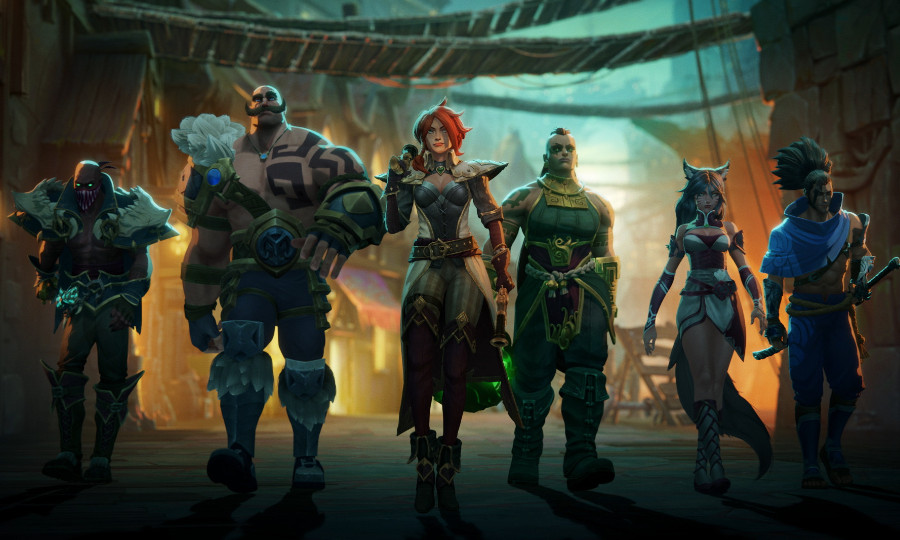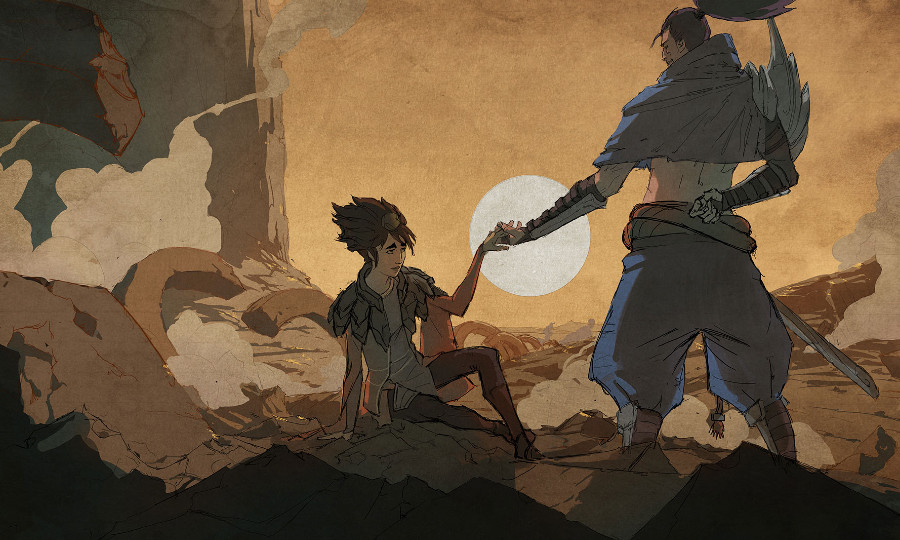After weeks of trial and error with Set 4, here’s our Teamfight Tactics guide. Climb the ranks like a pro!
Team Fight Tactics (TFT) is League of Legends’ auto-chess battler – arguably the only relevant one too, with over 1.5 million followers on Twitch. But it’s a complex beast and always subject to change, which is why we’re hooking you up with a no-holds-barred Teamfight Tactics guide.
With the virtual fog of war clearing and the meta settling, this is perhaps the best time to climb the ranks in TFT.
Now, before we begin, it’s worth pointing out that this is more than just a composition guide. We won’t just be ranking a bunch of teams and making a tier list – we believe in making a guide that develops the player’s ability to think for themselves. With that in mind, let’s get into the grit.

Teamfight Tactics Guide: A Quick Introduction
TFT games are more than just luck. It’s about maximising the value from the tools you get, each player cultivating a team to pit against each other until only one remains. You will have to find your ideal win condition if you want to stand any chance on the ladder, so here’s a quick breakdown of the game components.
The game is split into stages and rounds, where each round will force players to fight against each other – with the exception of the carousel and the final round. Losses will result in decreased health in proportion to how many enemy units remain.
The carousel is a neutral round where players pick up units and items from a rotating ‘carousel’ in pairs. This is determined by the players with the least amount of health, with tie-breakers determined randomly.

The final round of each stage will feature non-player enemies. Killing these results in drops. Towards the end game, these become bosses that drop full items over loot boxes containing unpredictable, random content.
A strong economy is the basis for any army. In addition to the flat amount of gold every player receives, you can increase your income by having a win/loss streak. Having at least 10/20/30/40/50 gold will also provide 1/2/3/4/5 gold per turn respectively.
Units are purchased from the shop or acquired from drops and the carousel. Upon collecting three of the same unit, they will merge to create a 2-star unit with increased stats and abilities. Similarly, three 2-stars will create a single 3-star unit. Each one contains a class and a trait, providing additional bonuses which can be checked by clicking on them in-game.
Player level determines the rarity of units in the store and the amount of units you can have on your board. Two experience points are rewarded per round, but you can always purchase four experience points with four gold. Player level also represents the rarity of the units in your store.
By amassing items and gold, players can create an ultimate team featuring units with incredible traits. But how do we do all this?
The Early Game
The early game is the most crucial and defining point of the game. TFT punishes players who repeatedly force the same composition, as luck determines over 90 percent of your items and units. Furthermore, Set 4 introduces the Chosen units (instant 2-star units with a doubled trait), which provides incentive to go for a composition the game hints you.
Ideally you don’t want to set your composition in stone, so players must keep their options wide. Unless the game gives you a strong Chosen unit or a random 3-cost unit early on, it’s recommended to buy a variety of units to keep on your bench.
Win/loss streaks are easier to maintain at the start, so it’s recommended that players commit to winning or losing. The amount of health lost at the start is quite minimal as player levels do not allow for a huge army, so sometimes it’s acceptable to intentionally lose for carousel priority.
By Krugs (first non-player round in stage two), you should have some 2-star units and begin to finalise your composition – or at the very least, you’ve made a final decision as to what it’s going to be. From this point onwards, you will need to begin amassing a fortune.
The only exception to this rule is hyper-rolling. TFT allows players to refresh the shop for two gold, which is generally avoided due to how scarce gold is at lower levels. However, the Moonlight trait allows lower star level units to star up when in play together, and the hyper-rolling strategy lets you empty your banks immediately (who cares about the future?) in exchange for your hunt for 3-stars.
Balancing risk and reward, we suggest doing this only if you have lots of Moonlight units or a Chosen one.
The Mid Game
Ideally, you’re cruising through the mid game without taking too many hits. As you’re saving gold, you won’t be aggressively purchasing units that aren’t related to your composition, nor will you be re-rolling (refreshing the store). Allow us to present the three possible scenarios.
Your composition allows for nine unit traits: this means that once you hit the 50 gold mark, all the excess gold should go into levelling up your player level. This also unlocks better rates for 3-5 cost units so you can get those elusive 2-stars.
Your composition needs 3-stars: excess gold should go into slow-rolling. We suggest players to refresh and purchase relevant units from the store as long as they stay above the 50 gold threshold. In many cases, a single 3-star unit can overwhelm a balanced team (as seen in this clip below).
The third scenario is where you’ve completely whiffed the early game and now you’re taking too many hits. Low health in TFT means hitting that 30-40 mark, where you’ll need an emergency solution. At this point, you need to make a gamble. Do you want to believe in your composition and make a comeback from low health, or stabilise?
If you desire stability, then any gold you have amassed needs to immediately go into your recovery. Ideally, you want to level up as much as your gold allows for and try to win with numbers. The risk here is that you won’t have gold for later, so you need to make use of the 4 or 5-costs that you see right here. This means changing your entire composition. Hopefully you can ride this wave to hit top four, at least.
The Late Game
The late game is where most players fail to make optimal decisions. Chances are the other 4-6 players who made it to the late game also have a strong composition with their own ideal traits and units. Firstly, here’s a checklist to make sure your composition is up to par.
Traits: Nine unit traits are simple, you get the nine different (or 8 if you have a Chosen unit) units with the same trait. Six-trait composition leaves room for two or three extra units – we’d recommend using that space to reinforce your team or counter others.
For example, nine cultists doesn’t require much item manipulation – you literally just need the trait.
Team composition can be divided into AP, AD, assassin, and tank comps. The first two will feature a front-liner of sorts with either an ability-powered or attack damaged-based champion dealing damage from behind. You can bolster these by getting traits for your damage dealers. Similarly, assassins and tanks would want sharper assassins and beefier tanks.
Traits and items can also be used to counter these teams. Two Negatron Cloaks gives a Dragon’s Claw for magic resistance. A Bramble Vest negates and reflects bonus attack damage. Mystic and Vanguard traits can gift resistances as well.
Items: Teams with a hyper-carry will need three perfect items on that single unit. We recommend looking at a tier list (no Teamfight Tactics guide is complete without at least one) to find the best units for each champion. This one’s made by the Challenger expert, Ace Of Spades.
Positioning: One skill that differentiates players is your ability to place units appropriately. Tier lists cannot account for every situation, so it’s up to you to make a judgement. Here are some considerations.
Watch out for assassins – your enemy will be looking to place these units to jump your carry. Either conceal your carries within a wall of units or predict your foe and shuffle your unit positioning at the last second. Remember, your opponent also has the option to change their positioning.
Zephyr and Mantle are items that can affect the board based on location: Zephyr will always remove the unit furthest away from it for a few seconds and the Mantle will shoot a beam to increase mana costs. You can either scatter your units and place your carry in the middle, or you can read your opponent’s strategy and shuffle accordingly.
Hopefully, by utilising all of this Teamfight Tactics Guide, you can climb the ladder. We personally found the skill level in each division to increase considerably with each new title – Gold 4, Platinum 4, Diamond 4, etc. – so it’s always wise to learn from the other players in each division as you skill up.
Adapt and overcome, that’s how you win in TFT.



